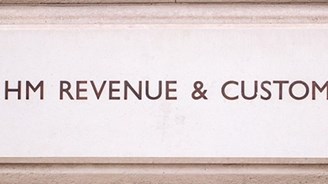Job Retention Bonus

The Chancellor announced the scheme in the Summer Statement and some more guidance has now been issued. Further detailed guidance will be issued by the end of September.
The Job Retention Bonus is a one-off payment to employers of £1,000 for every employee who they previously claimed for under the Job Retention Scheme and who remains continuously employed through to 31 January 2021. Eligible employees must earn at least £520 a month on average between the 1 November 2020 and 31 January 2021. Employers will be able to claim the Job Retention Bonus after they have filed PAYE for January and payments will be made to employers from February 2021.
Which employers can claim the Job Retention Bonus?
An employer will be able to claim the Job Retention Bonus for any employees that were eligible for the Coronavirus Job Retention Scheme and they have claimed a grant for. Where a claim for an employee was incorrectly made, a Job Retention Bonus will not be payable.
Employers must keep their payroll up to date and accurate and address all requests from HMRC to provide missing employee data in respect of historic Coronavirus Job Retention Scheme claims. Failure to maintain accurate records may jeopardise an employer’s claim.
HMRC will withhold payment of the Job Retention Bonus where it believes there is a risk that Coronavirus Job Retention Scheme claims may have been fraudulently claimed or inflated, until the enquiry is completed.
Which employees an eligible employer can claim the Job Retention Bonus for?
Claims will only be accepted for employees that were eligible for the scheme. Where a claim for an employee was incorrectly made, a Job Retention Bonus will not be payable. Employers will be able to claim for employees who:
- were furloughed and had a Coronavirus Job Retention Scheme claim submitted for them that meets all relevant eligibility criteria for the scheme;
- have been continuously employed by the relevant employer from the time of the employer’s most recent claim for that employee until at least 31 January 2021;
- have been paid an average of at least £520 a month between 1 November 2020 and 31 January 2021. The employee does not have to be paid £520 in each month but must have received some earnings in each of the three calendar months that have been paid and reported to HMRC via RTI;
- have up-to-date RTI records for the period to the end of January; and
- are not serving a contractual or statutory notice period, that started before 1 February 2021, for the employer making a claim
What earnings can be included in the £520 a month average minimum earnings threshold?
Only earnings recorded through RTI records can count towards the £520 a month average minimum earnings threshold.
If an employee was on statutory parental leave, returned after 10 June 2020 and was claimed for under the scheme then the employer will be able to claim the Job Retention Bonus in respect of that employee provided the other eligibility criteria are met.
If an employee is on a fixed term contract and was claimed for under the scheme then their employer can claim the Job Retention Bonus in respect of that employee provided the other eligibility criteria are met. Contracts can be extended or renewed without affecting eligibility for the bonus, provided that continuous employment is maintained.
How employers can claim the Job Retention Bonus
From February 2021, employers will be able to claim the Job Retention Bonus through GOV.UK.
The bonus will be taxable, so the business must include the whole amount as income when calculating their taxable profits for Corporation Tax or Self-Assessment.
Employers should ensure that their employee records are up-to-date, including accurately reporting their employee’s details and wages on the Full Payment Submission through RTI. Employers should also make sure all of their Coronavirus Job Retention Scheme claims have been accurately submitted and any necessary amendments have been notified to HMRC.



